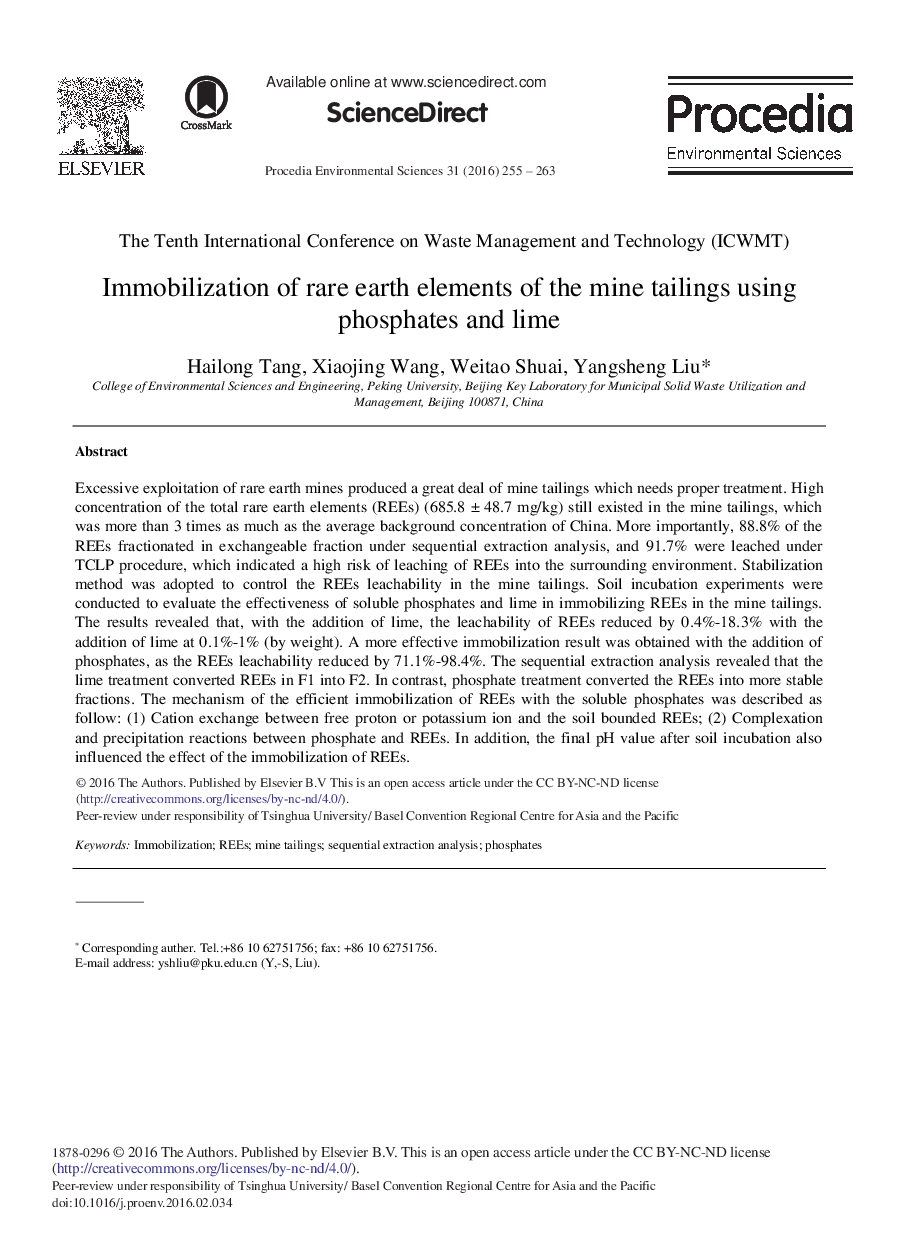| Article ID | Journal | Published Year | Pages | File Type |
|---|---|---|---|---|
| 4401546 | Procedia Environmental Sciences | 2016 | 9 Pages |
Excessive exploitation of rare earth mines produced a great deal of mine tailings which needs proper treatment. High concentration of the total rare earth elements (REEs) (685.8 ± 48.7 mg/kg) still existed in the mine tailings, which was more than 3 times as much as the average background concentration of China. More importantly, 88.8% of the REEs fractionated in exchangeable fraction under sequential extraction analysis, and 91.7% were leached under TCLP procedure, which indicated a high risk of leaching of REEs into the surrounding environment. Stabilization method was adopted to control the REEs leachability in the mine tailings. Soil incubation experiments were conducted to evaluate the effectiveness of soluble phosphates and lime in immobilizing REEs in the mine tailings. The results revealed that, with the addition of lime, the leachability of REEs reduced by 0.4%-18.3% with the addition of lime at 0.1%-1% (by weight). A more effective immobilization result was obtained with the addition of phosphates, as the REEs leachability reduced by 71.1%-98.4%. The sequential extraction analysis revealed that the lime treatment converted REEs in F1 into F2. In contrast, phosphate treatment converted the REEs into more stable fractions. The mechanism of the efficient immobilization of REEs with the soluble phosphates was described as follow: (1) Cation exchange between free proton or potassium ion and the soil bounded REEs; (2) Complexation and precipitation reactions between phosphate and REEs. In addition, the final pH value after soil incubation also influenced the effect of the immobilization of REEs.
